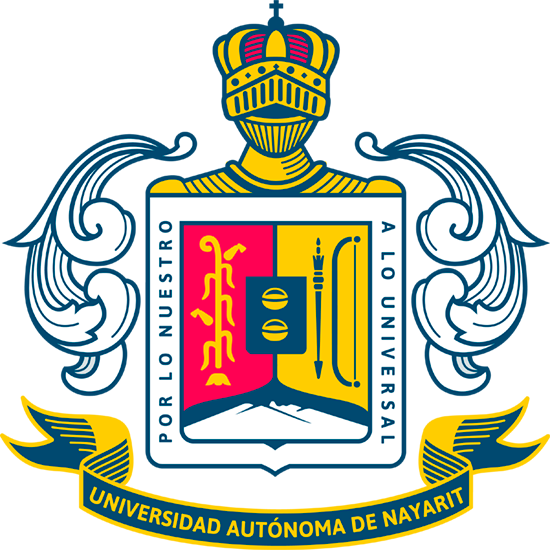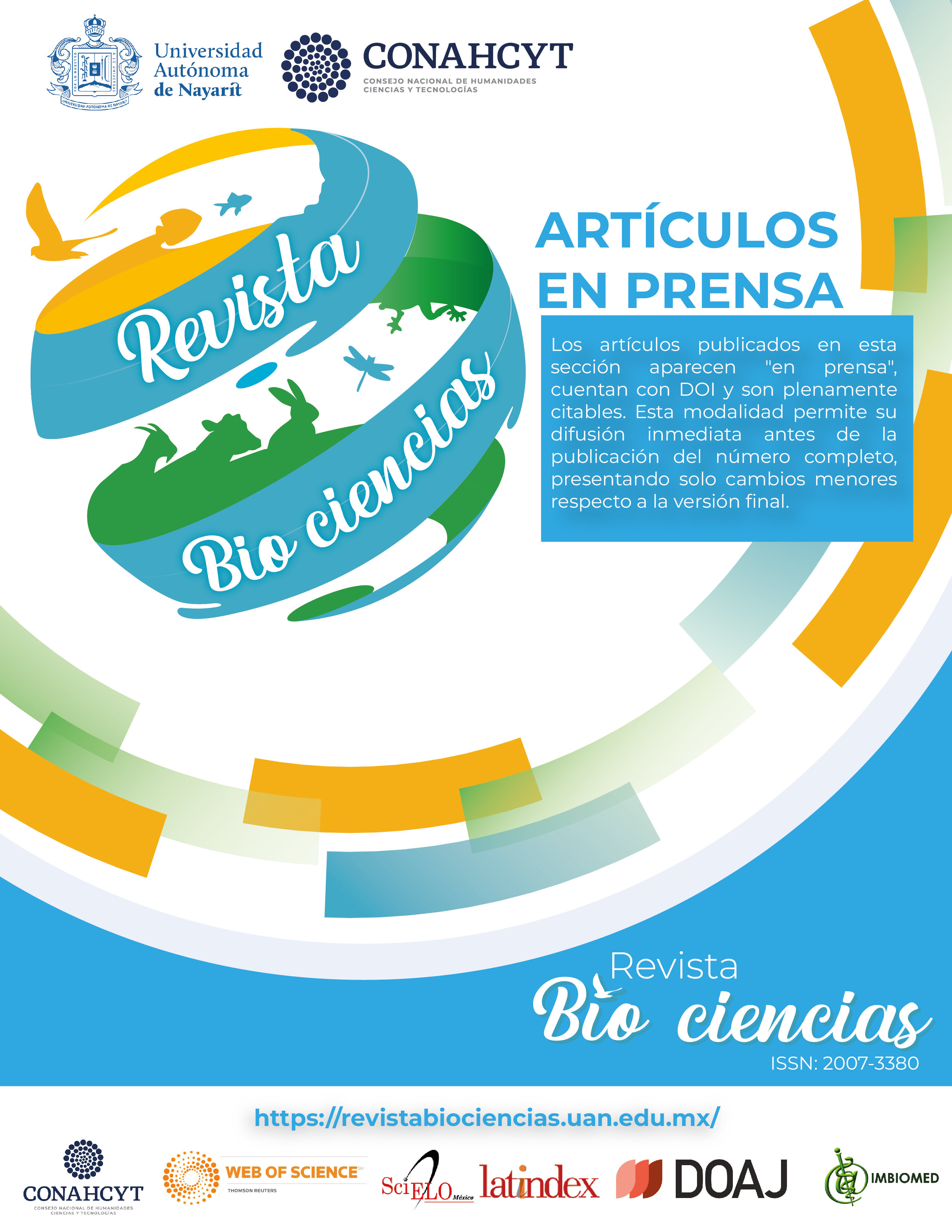Resumen
Los agaves, incluidas especies silvestres como el arroqueño (Agave spp.), son esenciales para la producción de mezcal. Sin embargo, la mayoría de las especies utilizadas en su elaboración, con excepción de Agave angustifolia Haw., no se cultivan ampliamente. Para asegurar la sostenibilidad de la producción mezcalera, es crucial promover la reforestación y el cultivo de agaves silvestres. Este estudio evaluó el efecto de fertilizantes de liberación lenta (SRFs) sobre el crecimiento, nutrición y contenido de azúcares en agave arroqueño. Se empleó un diseño de bloques completamente al azar con tres tratamientos. Cada tratamiento incluyó 20 plantas y cuatro repeticiones, el número de plantas por tratamiento en cada repetición fue igual a 5. Los tratamientos se evaluaron durante 10 meses e incluyeron: T1) control, sin fertilización, T2) Osmocote Plus® y T3) Multicote Agri®. En comparación con las plantas control, la aplicación de Osmocote Plus® incrementó 17.7% el número de hojas desplegadas, 13.7% la altura de planta, 13.8% la circunferencia de tallo, 52.4% el peso fresco de hojas, 48.9% el peso fresco de tallo y 53.4% el peso seco de hojas. La fertilización con Multicote Agri® aumentó 36.0% el peso fresco de raíces y 59.3% el contenido foliar de NO₃⁻. Los resultados evidencian el efecto positivo de los SRFs sobre el crecimiento y nutrición del agave arroqueño, lo que contribuye a optimizar la eficiencia en el uso de nutrientes, reducir el impacto ambiental asociado a la fertilización convencional y promover la conservación y el cultivo sustentable de especies nativas de agave.
Citas
Aguilera-Rodríguez, M., Aldrete, A., Martínez-Trinidad, T., & Ordaz-Chaparro, V. M. (2016). Producción de Pinus pseudostrobus Lindl. con sustratos de aserrín y fertilizantes de liberación controlada. Revista Mexicana de Ciencias Forestales, 7(34), 7-19. https://doi.org/10.29298/rmcf.v7i34.79
Arellano-Plaza, M., Paez-Lerma, J. B., Soto-Cruz, N. O., Kirchmayr, M. R., & Gschaedler-Mathis, A. (2022). Mezcal Production in Mexico: Between Tradition and Commercial Exploitation. Frontiers in Sustainable Food Systems, 6, 832532. https://doi.org/10.3389/fsufs.2022.832532
Arizaga, S., & Ezcurra. E. (2002). Propagation mechanisms in Agave macroacantha (Agavaceae), a tropical arid-land succulent rosette. American Journal of Botany, 89, 632–641. https://doi.org/10.3732/ajb.89.4.632
Arrizon, J., Morel, S., Gschaedler, A., & Monsan, P. (2010). Comparison of the Water-Soluble Carbohydrate Composition and Fructan structures of Agave Tequilana Plants of Different Ages. Food Chemistry, 122, 123–130. https://doi.org/10.1016/j.foodchem.2010.02.028
Bautista-Cruz, M. A., & Martínez-Gallegos, V. (2020). Promoción del crecimiento de Agave potatorum Zucc. por bacterias fijadoras de nitrógeno de vida libre. Terra Latinoamericána, 38, 555–567. https://doi.org/10.28940/terra.v38i3.647
Bravo, M. E., Espinosa, P. H., & López, L. P. (2007). Tecnología para la producción de maguey mezcalero en Oaxaca. INIFAP. Libro técnico No. 7 160p.
Castillejos-Reyes, C., Bautista-Cruz, A., Sánchez-Mendoza, S., & Quiñones-Aguilar, E. E. (2023). Response of agave coyote (Agave spp.) to the application of slow-release fertilizers under field conditions. Revista Biociencias, 10, e1431. https://doi.org/10.15741/revbio.10.e1431
Colunga-GarciaMarin, P., Torres-García, I., Casas, A., Figueredo-Urbina, C., Rangel-Landa, S., Lemus, A., Vargas-Ponce, O., Cabrera-Toledo, D., Zizumbo-Villarreal, D., Aguirre-Dugua, X., Eguiarte, L. E., & Carrillo-Galván, G. (2017). Los agaves y las prácticas mesoamericanas de aprovechamiento, manejo y domesticación 1. pp. 273–308. https://www.researchgate.net/publication/316883938_Los_agaves_y_las_practicas_mesoamericanas_de_aprovechamiento_manejo_y_domesticacion_1
Cruz-Vasconcelos, S. T., Ruíz-Posadas, L. M., García-Moya, E., Sandoval-Villa, M., & Cruz Huerta, N. (2020). Crecimiento y tasa de intercambio de CO2 de maguey pulquero (Agave salmiana Otto ex Salm-Dyck) obtenido por semilla. Agrociencia, 54, 911-926. https://doi.org/10.47163/agrociencia.v54i7.2242
Eguiarte, L. E., Jiménez-Barrón, O. A., Aguirre-Planter, E., Scheinvar, E., Gámez, N., Gasca-Pineda, J., Castellanos-Morales, G., Moreno-Letelier, A., & Souza, V. (2021). Evolutionary ecology of Agave: distribution patterns, phylogeny, and coevolution (an homage to Howard S. Gentry). American Journal of Botany, 108, 216–235. https://doi.org/10.1002/ajb2.1609
Enríquez del Valle, J. R., Alcara-Vázquez, S. E., Rodríguez-Ortiz, G., Miguel-Luna, M. E., & Manuel-Vázquez, C. (2016). Fertirriego en vivero a plantas de Agave potatorum Zucc micropropagadas-aclimatizadas. Revista Mexicana de Ciencias Agrícolas, 7(5), 1167-1177. https://www.scielo.org.mx/scielo.php?script=sci_arttext&pid=S2007-09342016000501167
García-Martínez, L. I., Sánchez-Mendoza, S., & Bautista-Cruz, A. (2020). Combinación de hongos micorrízicos y fertilización fosforada en el crecimiento de dos agaves silvestres. Terra Latinoamericana, 38, 771-780. https://doi.org/10.28940/terra.v38i4.702
García-Mendoza, A. J. (2011). Tres especies nuevas de Manfreda (Agavaceae) del sur de México. Revista Mexicana de Biodiversidad, 82, 747-757. https://doi.org/10.22201/ib.20078706e.2011.3.731
García-Mendoza, A. J., Cházaro-Basañez, M. I., Nieto-Sotelo, J., Sánchez-Teyer, L. F., Tapia-Campos, E., Gómez-Leyva, J. F., Tamayo-Ordóñez, M., Narváez-Zapata, J. A., Rodríguez-Garay, B., Palomino-Hasbach, G. A. (2017). Agave. In Panorama Del Aprovechamiento de Los Agaves En México. (CONACYT-CIATEJ) pp. 15–68. https://ciatej.mx/files/divulgacion/divulgacion_5f63c47b9b739.pdf
Gentry, H. S. (1982). Agaves of Continental North America. Tucson. The University of Arizona Press. https://doi.org/10.2307/j.ctv1t4m2h4
Gonzáles-Iturbe, J. A., Olmsted, I., & Tun-Dzul, F. (2002). Tropical dry forest recovery after long term Henequen (sisal, Agave fourcroydes Lem.) plantation in northern Yucatan, Mexico. Forest Ecology and Management, 167(1-3), 67–82. https://doi.org/10.1016/S0378-1127(01)00689-2
Guertal, E. A. (2009). Slow-release Nitrogen Fertilizers in Vegetable Production: A Review. HortTechnology, 19(1), 16–19. https://doi.org/10.21273/HORTSCI.19.1.16
Instituto Nacional de Estadística, Geografía e Informática [INEGI]. (2025). Sistema de Consultas, México en cifras, San Jacinto Chilateca, Ocotlán de Morelos, Oaxaca. https://www.inegi.org.mx/app/areasgeograficas/?ag=200680007
Instituto Nacional de Estadística, Geografía e Informática [INEGI]. (1997). El Agave Tequilero en el Estado de Jalisco. https://books.google.com.mx/books/about/El_agave_tequilero_en_el_estado_de_Jalis.html?id=4IOwDgAAQBAJ&redir_esc=y
Infante, D., González, G., Peraza-Echeverría, L., & Keb-Llanes, M. (2003). Asexual genetic variability in Agave fourcroydes. Plant Science, 164(2), 223–230. https://doi.org/10.1016/S0168-9452(02)00404-1
Li, J. Y. L., Hua, Q. X., Tan, J. F., Zhou, J. M., & Hou, Y. L. (2005). Mineral coated fertilizer effect on nitrogen-use efficiency and yield of wheat. Pedosphere, 15(4), 526–531. https://www.researchgate.net/publication/299209722_Mineral_coated_fertilizer_effect_on_nitrogen-use_efficiency_and_yield_of_wheat
Martínez-Ramírez, S., Trinidad-Santos, A., Bautista-Sánchez, G., & Pedro-Santos, E. C. (2013). Crecimiento de plántulas de dos especies de mezcal en función del tipo de suelo y nivel de fertilización. Revista Fitotecnia Mexicana, 36(4), 387-393. https://www.scielo.org.mx/scielo.php?script=sci_arttext&pid=S0187-73802013000400004
Mellado-Mojica, E., López-Medina, T. L., & López, M. G. (2009). Developmental Variation in Agave Tequilana Weber Var. Azul Stem Carbohydrates. Dynamic Biochemistry, Process. Biotechnology and Molecular Biology, 3(1), 34. http://www.globalsciencebooks.info/Online/GSBOnline/images/0906/DBPBMB_3(SI1)/DBPBMB_3(SI1)34-39o.pdf
Motamedi, E., Safari, M., & Salimi, M. (2023). Improvement of tomato.yield and quality using slow release NPK fertilizers prepared by carnauba wax emulsion, starch-based latex and hydrogel nanocomposite combination. Scientific Reports, 13, 11118. https://doi.org/10.1038/s41598-023-38445-7
Nobel, P. S., Castañeda, M., North, G., Pimienta-Barrios, E., & Ruiz, A. (1998). Temperature influences on leaf CO2 exchange, cell viability and cultivation range for Agave tequilana. Journal of Arid Environmental, 39(1), 1-9. https://doi.org/10.1006/jare.1998.0374
Pimienta-Barrios, E., Robles-Murguía, C., Nobel, P. S. (2001). Net CO2 Uuptake for Agave tequilana in a warm and a temperate environment. Biotropica 33(2), 312-318. https://doi.org/10.1111/j.1744-7429.2001.tb00181.x
Rashid, M., Hussain, Q., Khan, K. S., Alwabel, M. I., Hayat, R., Akmal, M., Ijaz, S. S., Alvi, S., & Obaid-ur-Rehman, S. (2021). Carbon-Based Slow-Release Fertilizers for Efficient Nutrient Management: Synthesis, Applications, and Future Research Needs. Journal of Soil Science and Plant Nutrition, 21, 1144–1169. https://doi.org/10.1007/s42729-021-00429-9
Rendón–Salcido, L. A., Colunga–GarcíaMarín. P., Barahona–Pérez, L. F., Pimienta–Barrios, E., Magdub–Méndez, A., & Larqué–Saavedra, A. (2009). Sugars and alcohol byproducts from henequén (Agave fourcroydes) as influenced by plant age and climate. Revista Fitotecnia Mexicana, 32, 39–44. https://www.scielo.org.mx/scielo.php?script=sci_arttext&pid=S0187-73802009000100005
Sánchez-Mendoza, S., & Bautista-Cruz, A. (2022). Efecto de fertilizantes de liberación lenta y fitohormonas en el crecimiento de Agave angustifolia Haw. Entreciencias, 10(24), 1-11. https://doi.org/10.22201/enesl.20078064e.2022.24.82738
Sánchez-Mendoza, S., Bautista-Cruz, A., Robles, C., & Rodríguez-Mendoza, M. N. (2020). Irrigation and slow-release fertilizers promote the nutrition and growth of Agave angustifolia Haw. Journal of Plant Nutrition, 43(5), 699-708. https://doi.org/10.1080/01904167.2019.1701025
SAS Institute. (2004). SAS 9.1 SQL Procedure User´s Guide. Cary, NC, USA.
Tiong, J., Sharma, N., Sampath, R., MacKenzie, N., Watanabe, S., Metot, C., Lu, Z., Skinner, W., Lu, Y., Kridl, J., Baumann, U., Heuer, S., Kaiser, B., & Okamoto, M. (2021). Improving nitrogen use efficiency through overexpression of alanine aminotransferase in rice, wheat, and barley. Frontiers in Plant Science, 12, 628521. https://doi.org/10.3389/fpls.2021.628521
Torres, I., Casas, A., Vega, E., Martínez-Ramos, M., & Delgado-Lemus, A. (2015). Population Dynamics and Sustainable Management of Mescal Agaves in Central Mexico: Agave potatorum in the Tehuacán-Cuicatlán Valley. Economic Botany, 69, 26–41. https://doi.org/10.1007/s12231-014-9295-2
Trejo, L., Luz-Velázquez, M. L., Vallejo, M., & Montoya, A. (2022). Differentiating knowledge of Agave landraces, uses and management in Nanacamilpa, Tlaxcala. Journal of Ethnobiology, 42(1), 31-50. https://doi.org/10.2993/0278-0771-42.1.31
Wang, C., Lv, J., Xie, J., Yu, J., Li, J., Zhang, J., Tang, C., Niu, T., & Patience, B. E. (2021). Effect of slow-release fertilizer on soil fertility and growth and quality of wintering Chinese chives (Allium tuberm Rottler ex Spreng.) in greenhouses. Scientific Reports, 11, 8070. https://doi.org/10.1038/s41598-021-87593-1
Yamamoto, C. F., Pereira, E. I., Mattoso, L. H. C., Matsunaka, T., & Ribeiro, C. (2016). Slow-release fertilizer based on urea/urea-formaldehyde polymer nanocomposites. Chemical Engineering Journal, 287, 390-397. https://doi.org/10.1016/j.cej.2015.11.023
Zúñiga-Estrada, L., Rosales, E. R., Yáñez-Morales, M. J., & Jacques-Hernández, C. (2018). Características de una planta MAC, Agave tequilana desarrollada con fertigación en Tamaulipas, México. Revista Mexicana de Ciencias Agrícolas, 9, 553-564. https://doi.org/10.29312/remexca.v9i3.1214

Revista Bio Ciencias por Universidad Autónoma de Nayarit se encuentra bajo una Licencia Creative Commons Atribución-NoComercial-SinDerivadas 4.0 Unported.
Basada en una obra en http://biociencias.uan.edu.mx/.
Permisos que vayan más allá de lo cubierto por esta licencia pueden encontrarse en http://editorial.uan.edu.mx/index.php/BIOCIENCIAS.licencia de Creative Commons Reconocimiento-NoComercial-SinObraDerivada 4.0 Internacional






